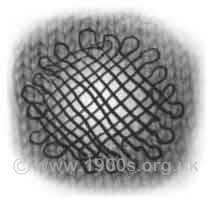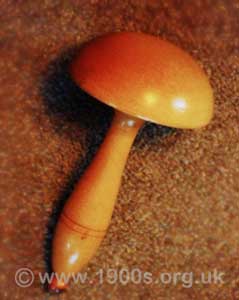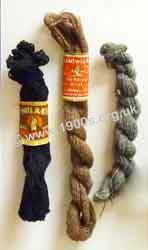Darning for repairing holes in clothes: tips from the past

The art of darning the old way seems to have been largely lost. This page describes the it and explains how and why darning was done in the past.
____
By the webmaster, based childhood observations of older women who frequently darned holes in clothes
Why there was so much darning in the past
In the past most women had to do a lot of darning. The culprit was wool, the only yarn readily available for knitting.
- Whereas today's yarn is largely man-mad fibre which is strong and wears well, woollen yarn wears through very quickly under stress like on the heels of socks which rubbed against shoes and feet and elbows of jumpers and cardigans where the people leant onto desks and tables.
- Also wool was always under attack from the clothes moth which left unsightly holes.
- Money was tight, so hand-knits rather than bought-ones were standard, along of course with hand-me-down clothes.
Consequently women became very efficient at darning.
How to darn woollen clothes with woollen yarn
The problems with wool meant there were two main ways in which the darning had to be different from todays:
- The darn had to stretch to adjust its curve to the shape of the part of the body that it had to cover. Heals and elbows are not flat.
- Wool naturally thrinks when washed and darning wool was not pre-shrunk as it is today - but the darn should not pull away from the knit or cloth that was surrounding it.
The solution to the problem of shrinkage was to darn from the back of the hole and leave a loop of extra wool at the end of every row of darning as shown in the following sketch. From the front the loops did not show and after the garment had been worn and washed, the loops seldom showed from the back either.

Loops left when darning to allow for shrinkage of the darning wool on washing and general easing into shape on wearing. Viewed from the back.
Another problem was that round the edges of the hole, the sock or other garment was always thin and weak. So the darning had to be taken some way beyond the hole into the sound area. Otherwise it would quickly pull away in wear.
It was crucial to remember this. Otherwise the wool shrunk into a small, hard, insightly pea-like ball. I saw this often as a child.
Note from the webmaster
Although modern yarns don't shrink, I always leave the small loops when darning. It means that there is some stretch in the darn so that it can be flattened or eased into the required shape.
After the next wash, when the darning wool had shrunk, the loops would be almost entirely gone. If the loops were omitted, the whole darn would shrink into a lump, puckering the sock around it, making the sock uncomfortable to wear and quickly damaging it.
So that the loops wouldn't show, the darn had to be done with the garment inside out.
Darning tools: the darning mushroom

Wooden darning mushroom
There was a special darning mushroom made of wood which was put inside the item to be darned, behind the hole to hold the darning area taut for working. Its 'stalk', with the rest of the sock around it, was held in one hand and the darning needle was worked with the other hand. The curve at the top of the mushroom helped to keep the darn profile loose.
Darning tools: darning needles

Darning needle: long with a large enough eye to take wool
Darning needles had larger eyes than regular sewing needles so that they could take the thickness of the darning wool. They were also longer than regular needles so that they could weave in and out across a reasonably sized hole in one go.
Darning wool

Darning wool, sold in small skeins. Photographed in Lincolnsfield Children's Centre.
Wool for darning was sold in skeins which were much smaller than the skeins for knitting. It came in the typical dull colours needed for darning socks and was very fine, so that the darn wouldn't look or feel lumpy.

Darning wool, sold on cards. Photographed in Eastbourne Museum of Shops.
There were also cards with darning wool wound round them which were available in a much wider range of colours, suitable for darning a range of woollen garments.
| sources | webmaster | contact |
Text and images are copyright
If you can add anything to this page or provide a photo, please contact me.



